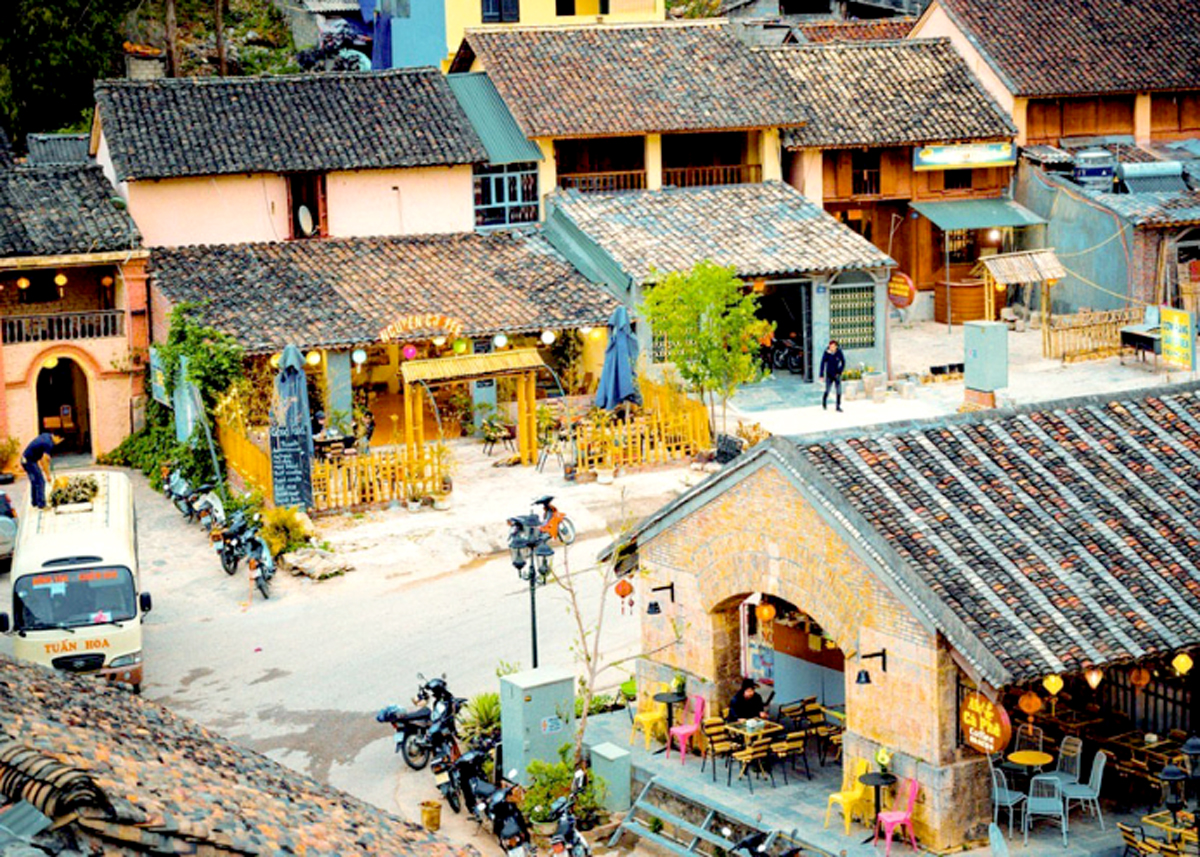Majestic beauty of Dong Van Plateau
BHG - Dong Van is the northernmost border district of the country, where up to 87% of the population are Hmong people. Dong Van's terrain is severely fragmented, due to rugged rocks and steep hills, along with the harsh weather conditions, making this a locality facing numerous difficulties in all respects. Thanks to their internal strength, the Party Committee of Dong Van District has led the local ethnic groups to successfully implement policies for eradicating hunger, reducing poverty, building infrastructure, leveraging tourism strengths, and maintaining national border sovereignty. As a result, the District has been honoured by the Party and State, with the “Hero of Labour in the renovation period” title.
 |
| A corner of Dong Van’s old quarter. |
National Expressway 4C continues to ascend and is filled with dangerous hairpin turns, cliffs on one side and a deep and dizzying abyss on the other. Passing through Tham Ma Heaven Gate, Chin Khoanh Slope, and Sa Phin Heaven Gate, the path suddenly descends into a flat and dream-like valley. The silhouette of the sa moc (Cunninghamia) and Ma Vi pine trees create a scenery that faintly resembles a Northern European region I have seen somewhere. In the spring, plum, peach, and pear flowers bloom profusely, covering the misty mountain slopes. In the autumn, the white and pink buckwheat flowers adorn the hillsides. Fields of yellow mustard flowers and wild chrysanthemums stretch like the last remaining sunlight of the day. In winter when all the vegetation withers, the purple mint flowers are soft, like the song of a young Hmong girl in love. Diligent bees gather nectar to produce a specialty of pure amber honey, with the essence of the land and sky, renowned far and wide as Mint Honey. Villages are hidden in the clouds, and smoke from the burning grass, mixed with the fluffy and white clouds across the sky, signals the new crop season.
The 184-kilometre-long Happiness Road, with its rocky walls, dizzying abyss, and mountains touching the clouds, at an average altitude of 1,000 to 1,600 metres above sea level, makes the journey to the rocky plateau a fascinating and surprising adventure.
Dong Van is home to 17 ethnic groups, with the Hmong people making up more than 87%. In their history, the Hmong people came to this plateau to make friends with other ethnic minorities, creating a warm community. They lived and fought against harsh nature and enemies to uphold the strong borderlands.
In the past, Dong Van Plateau was a vast rocky mountain area, with only one district-level administrative unit in Pho Bang. The main sources of income were corn and opium, as the natural conditions here were favourable for this medicinal plant. Then, Dong Van was divided into four district-level administrative units, including Quan Ba, Yen Minh, Dong Van, and Meo Vac, for easier management and leadership.
Dong Van has also been courageous and heroic in the campaign to open roads across the plateau. The heroic road named Happiness, which is 184 kilometres long, connecting Ha Giang, Dong Van and Meo Vac, was opened in 1965 after five years of digging and breaking mountains, to connect the vast border area with the expansive lowlands, bringing true happiness to the ethnic people in the highlands.
Dong Van, the frontier land and the northernmost point of the country is changing following the nation's development.
Cao Xuan Thai





READER COMMENTS